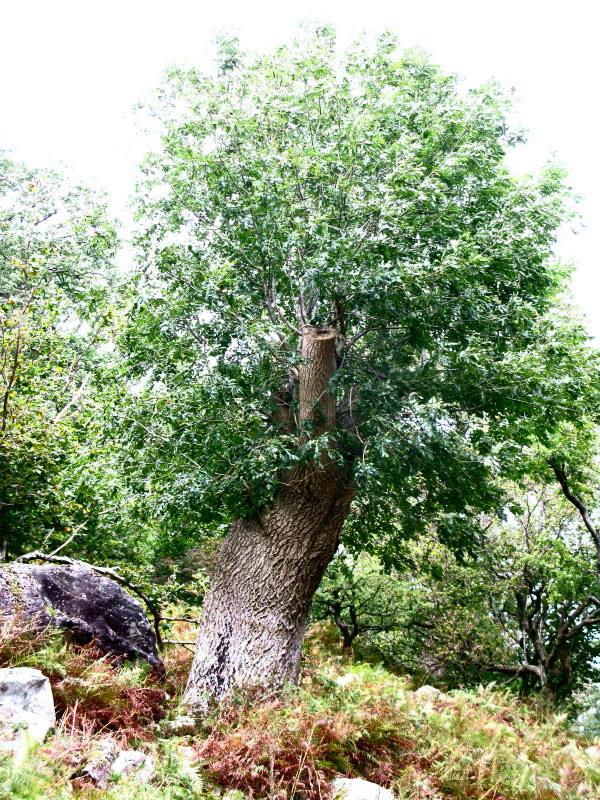Highlights | August 2019
David Alderman, 24/09/2019
In August there were 556 new trees recorded, of which 425 (76%) were verified.
Activity has mostly been in the north of England and Monmouthshire
Ash pollards, Cumbria
Ancient trees recorded include some hollow ash pollards in Borrowdale, Cumbria, not far from the historic yew trees (“Wordsworth’s Fraternal Four”) but these are only a sample of veteran and ancient trees to be found in this area. Michael Woolner was paying his respects to the ancient yew trees when he spotted the ash and recorded them on the ATI. There is a long history of pollarding ash in the Lake District, continued to this day, but newly pollarded trees are very susceptible to Chalara ash dieback (Hymenoscyphus franxineus) and so re-pollarding these trees is a sensitive issue and of concern at the moment
https://ati.woodlandtrust.org.uk/tree-search/tree?treeid=195235

A hollowing ancient ash pollard was recorded and verified by Michael Woolner in Cumbria - great find Michael!

A large, 7.95m girth, multi-stemmed pedunculate oak was verified by Owen Johnson MBE in a private garden this month!
The largest oak recorded in August has a girth of 7.95m at 0.5m, and was discovered in a private garden in West Sussex (see picture above). It is of a multi-stem form but clearly has history with its hollowing trunk which, at some time, someone attempted to block up with concrete. The tree is part of a historic boundary on land belonging to Sunte House, built c.1700, becoming a fashionable tea house of the time. Thanks to the Tree Registers Owen Johnson MBE for getting permission to see and record these trees on the ATI.
https://ati.woodlandtrust.org.uk/tree-search/tree?treeid=195459
Within the same private grounds is another fine oak with a superb bole, almost 6m in girth.
https://ati.woodlandtrust.org.uk/tree-search/tree?treeid=195458
Studley Royal Re-visited
Following a survey by National Trust volunteers in 2010, the trees of Studley Royal by Fountains Abbey, are being re-visited and updated by ATI volunteers, guided by Regional Lead Verifier Alan Hunton. This was highlighted in the recent ATI E-Newsletter but worth repeating here because of the wealth of its remarkable trees. The team are adding details to the original records improving the accuracy and increasing the value of this data. Adding new images and occasionally giving new locations, presumably the trees aren’t actually walking, it is a time consuming but very worthwhile, and hopefully satisfying, exercise.
https://ati.woodlandtrust.org.uk/tree-search/tree?treeid=195500
It was nice to see that the one remaining branch on the champion Wild cherry is still very much alive! https://ati.woodlandtrust.org.uk/tree-search/tree?treeid=4853
This tree was first recognised as being an exceptionally large specimen in 1949 when it had a girth of 3.93m. 70 years on and it has increased to 6.42m!

A stunning ancient wild cherry at Studley Royal and Fountains abbey - believed to be one of the oldest wild cherry trees in the world!

A beautiful 6.8m girth sweet chestnut - one of many fantastic sweet chestnut trees to be found at Studley Royal and Fountains abbey. Great find Alan!
Thank you to everyone for your tree recording efforts over the summer! Autumn has officially arrived with the first golden hues now starting to show - a perfect time to visit your local woodland and help us to record more fantastic trees!
With thanks.
